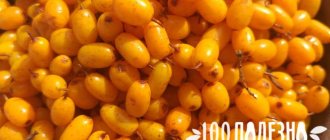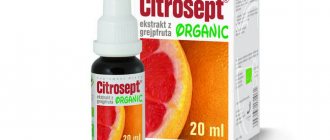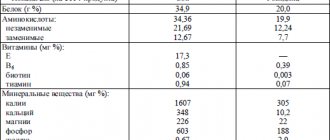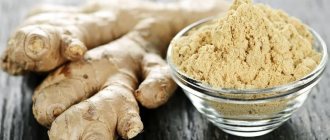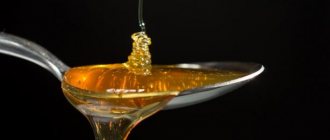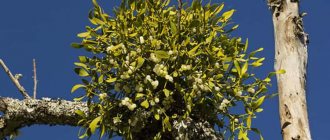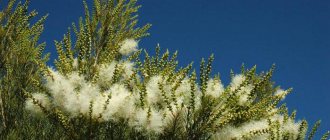Agaricus is a parasitic tinder fungus that grows on diseased larch trunks (hence its other name “larch sponge”). For many centuries, agaricus has been considered an indispensable remedy for human health. They treated diabetes, tuberculosis, and used them to heal wounds and bruises. With the development of scientific technology, many studies have been conducted that have shown that agaricus contains many mineral salts and beneficial acids. It also contains more than 70% resinous substances. Thanks to this mineral composition, leaf sponge began to be used as an effective means for weight loss. After all, agaricus perfectly breaks down fats and improves metabolism. It also contains special components for the proper functioning of our liver. In addition, this mushroom is good at cleansing the body of toxins and has a laxative effect, which also plays an important role in losing extra pounds.
Description
Agaricus is the king of all medicines. This expression can be found in ancient manuscripts dedicated to healing. The meaning of this phrase is largely relevant today.
Agaricus, also known as the larch sponge, is a parasitic larch fungus. In outline it resembles a cone or a hoof, and some compare its shape to a plate embedded in a tree and turned upside down. The surface of Agaricus is hard and rough, but inside it is soft, similar to a cork or sponge to the touch, hence its name. The outside color is white, with brownish spots, and the inside is white, sometimes with a yellowish tint.
This mushroom is called larch because it is most often found on the trunks of larches, but Agaricus also grows on other coniferous trees - cedars, fir, and occasionally on birch trees. For a tree, such a “guest” is considered a parasite - it gradually destroys the wood, taking nutrients from the plant. But at the same time, Agaricus accumulates valuable components - and thanks to this, it is considered a very valuable medicinal plant.
Agaricus grows in the northeastern regions of the European part of Russia, but most of all it can be found beyond the Urals - in Siberia and the Far East. The mushroom is distinguished by its enviable longevity: it can reach the age of 75 years, while growing up to 10 kilograms in weight and 30 centimeters in length.
In order to obtain medicinal raw materials, it is necessary to collect young mushrooms. They are distinguished from the old ones by their medium size and lighter color; inside they should be white, loose and soft. Old mushrooms, on the other hand, are hard as wood and their insides may become stained.
Agaricus collection season begins in spring and lasts until mid-summer. Mushrooms can be knocked down from trees using a strong stick, or separated with an ax. The collected mushrooms should be cleared of debris and hard bark, then dried and stored in a well-ventilated area.
Medicinal properties
In ancient times, agaricus was called the “elixir of life.” The healing properties of the mushroom were considered universal. And today, with its help, traditional healers and homeopaths treat the following diseases:
- respiratory system, including asthma;
- ulcers and inflammatory processes in the gastrointestinal tract;
- diabetes;
- Botkin's disease (jaundice);
- hormonal disorders;
- overweight.
Allows you to remove toxins and waste, cleanse the body of parasitic infections and tumors, including cancer, using agaricus (medicinal sponge). And patient reviews confirm the powerful healing effect of this mushroom.
Larch sponge is not only an effective anti-inflammatory and antibacterial agent. Its extracts can be used as an antiviral agent.
Studies have shown that agaricus has a particularly strong effect against smallpox viruses, swine and bird flu, and herpes. This makes it a very valuable plant.
DETAILS: Apple cider vinegar for hair. Reviews. Rinsing hair with apple cider vinegar. Hair masks
A solution prepared from an alcoholic extract of the mushroom is ten times more effective against influenza viruses than the strong antiviral drug Ribaverin. At the same time, agaricus does not have a toxic effect on the human body.
An important property of the mushroom in question, used in folk medicine, is the ability to adsorb toxins and remove them from the body. This is especially important for people with cancer. After a course of chemotherapy, larch sponge helped many patients. Reviews from people who managed to cleanse the body with its help speak best about the unique properties of this product.
Application and history of use
Records of the miraculous properties of Agaricus have been found in historical evidence since ancient times. For thousands of years, this mushroom has been called the “elixir of life” and has been used to treat a wide variety of ailments.
The famous physician Avicenna mentioned the larch sponge in his works, recommending it for various ailments. There is also a legend about the Hellenic king Mithridates, who from childhood took a special potion based on Agaricus, which protected against poisoning. When Mithridates was defeated in one of the battles, he took a strong poison in order to die and not be captured by his enemies - but did not get the desired result, he managed to gain such strong protection from poisons thanks to the larch sponge.
The ancient Greeks highly valued Agaricus, the “king of all medicines,” buying large quantities of it on their overseas voyages, because this mushroom did not grow in their country. They paid for it in pure silver, giving it the same amount as the dried mushrooms weighed.
Agaricus export
From pre-revolutionary Russia, Agaricus was actively exported to Europe and Asia. In modern Russia, Agaricus is also actively exported to Europe and Asia. Its properties were appreciated by both Arab and European doctors. It was also used as an antidote by one of the most famous poisoners, the French Queen Catherine de Medici.
Russian experience in using larch sponge
Russian doctors also did not ignore the larch sponge. They treated respiratory diseases - consumption, asthma, as well as stomach ulcers, diabetes and jaundice. Perhaps Ermak would not have returned from his campaign in Siberia if the local doctor had not given him the infusion of Agaricus when the chieftain fell ill with severe consumption - at that time this was almost the only available cure for such a disease.
Powder from Agaricus was also used as baby powder. The healing properties of larch sponge have long been used to treat wounds, including during military campaigns. In Rus', a method for producing special “pulp” was known: mushrooms were boiled in a special way and separated into fibers, resulting in an excellent dressing material that perfectly absorbed blood and ensured rapid healing of injuries. This cotton-like substance was taken with them by warriors going to battle. Later, “tinder cotton wool” was obtained in a similar way, which was used during the Second World War in Soviet hospitals.
Agaricus in modern medicine
In modern medicine, Agaricus is widely used. First of all, its properties to remove toxins, waste and other harmful substances from the body make it one of the most popular herbal remedies for cleansing the body. This is necessary when fighting parasites - worms, opisthorchiasis, etc., and when getting rid of excess weight, and when treating the gastrointestinal tract, and when fighting various oncological diseases. Larch sponge, as a natural remedy for weight loss, has been used since time immemorial. It is known that Agaricus promotes the breakdown of fats and creates all the conditions for metabolism to occur correctly in the body. Its laxative properties also promote weight loss. In addition, Agaricus improves liver function - and this is necessary for almost every person struggling with excess weight.
The use of agaricus in the treatment of diseases of the respiratory system
From ancient times to the present day, Agaricus has been used as an effective remedy for the treatment of various respiratory diseases. It has a healing effect on pneumonia, acute and chronic bronchitis, pleurisy, and tuberculosis. Larch sponge infused with water helps to cope with excessive sweating, which affects patients with fever and tuberculosis.
The use of agaricus in the treatment of gastrointestinal diseases and hormonal disorders
For liver diseases, Agaricus exhibits medicinal properties due to its lanophil content. This polysaccharide stimulates the liver, promotes faster breakdown of fats and their removal from the body, ultimately normalizing metabolism and establishing the correct fermentation process in the liver. Therefore, drugs with Agaricus are recommended for a variety of liver disorders, cirrhosis, chronic and viral hepatitis B and C, for the treatment of helminthiasis and tumors. Agaricus is useful for the biliary tract, as it helps cope with pathogenic microorganisms. Larch sponge exhibits important therapeutic effects in the fight against Graves' disease and can make life easier for people with diabetes. Agaricus is very useful for constipation - it is a natural remedy with an excellent laxative effect.
Decoctions and infusions of Agaricus are often part of programs for the treatment of dysbiosis. Their positive effect on neuralgia and neurasthenia is known. Agaricus exhibits its sedative properties and has a slight hypnotic effect.
Application of Agaricus in oncology
For oncological diseases, Agaricus is prescribed during radiotherapy and chemotherapy. Its properties to remove toxins and poisons from the body help prevent unwanted effects from radiation and reduce the side effects of taking strong chemical drugs.
It is also known that Agaricus exhibits antiviral activity, helps destroy pathogenic microflora in the lungs, bile ducts and liver, and has a diuretic effect. Remedies based on this mushroom often become assistants in the treatment of hyperfunction of the thyroid gland. Both the hemostatic and wound healing properties of Agaricus are used. And in the recommendations of oriental medicine, Agaricus is recommended as a remedy for rejuvenating the body, helping to push back and reverse the aging process.
Side effects of Agaricus and contraindications
When treating with Agaricus, it should be borne in mind that this remedy must be used with great caution, strictly observing the dosage. Agaricus is poisonous. In case of overdose, diarrhea, rash, itching, and vomiting are possible.
The use of Agaricus is contraindicated during pregnancy and breastfeeding, as well as for certain diseases of the liver and intestines. It is not recommended for use by elderly people and children. To avoid possible troubles, you should consult your doctor before using Agaricus.
Infusion of Agaricus
Infusion of Agaricus. It has a calming effect and also a laxative effect.
To prepare the infusion, you need to chop the raw materials with a sharp knife. This recipe requires 1 teaspoon of Agaricus. The raw materials should be placed in a glass jar and pour 250 ml of boiling water. The jar needs to be wrapped in a warm towel in several layers and left for 8 hours. After this, the resulting infusion should be filtered and taken 80 ml 3 times a day.
Note: you can prepare this infusion in a thermos.
Agaricus mushrooms do not have the most pleasant taste; they are bitter. Therefore, components are often added to medicinal decoctions and infusions to soften the taste and mask the bitterness. This could be herbs (such as mint), ginger or lemon. Another option is an infusion of Agaricus with cinnamon, which is often used to combat excess weight.
Place 2 teaspoons of dry crushed raw materials in a suitable container, add a glass of boiled water and place in a steam bath, hold for 5-7 minutes. After this, leave to infuse for 2-3 hours, and then add half a teaspoon of cinnamon.
Chemical composition
Agaricus contains:
- organic acids (fumaric, malic, agaricic, citric, ricinol, eburicol);
- mineral salts;
- vitamins;
- resins (up to 80%);
- glucose;
- fixed oils;
- polysaccharides;
- phytosterols.
The valuable properties of agaricus are due to the high content of resinous substances, higher fatty acids, polysaccharides and phytosterols in the mushroom pulp. The main component that determines the therapeutic effect of agaricus is the agaricic acid it contains. It has a sedative and hemostatic effect, and also affects the body as a laxative.
Agaricus infusion recipe
To prepare the infusion, the raw materials are crushed with a sharp knife. You can use ready-made powder purchased at a pharmacy. You will need a teaspoon of agaricus (teaspoon), which should be placed in an enamel or glass container and pour 1/4 liter of boiling water. Wrap the container in a warm towel and let the mixture sit for eight hours. Then it is filtered and taken eighty milliliters three times a day. The infusion has a calming property.
It should be noted that agaricus does not have the most pleasant taste - it is bitter. Therefore, you can add various herbs (for example, mint), lemon, ginger, cinnamon to decoctions or infusions, which are especially effective in the fight against excess weight.
Agaricus tincture is easy to prepare. A glass of dry raw materials is filled with alcohol (500 ml) and put in a cool, dark place for two weeks. From time to time the composition must be shaken. Take the tincture before meals three times a day, thirty drops.
Usually, in order to effectively lose weight, an infusion is prepared from a deciduous sponge. This is done as follows:
- Take 30-50 grams of agaricus and put it in warm water (300-500 ml).
- Leave to infuse for about 8-9 hours.
- Then pour the water into a cup, but you will still need this water!
- The mushroom itself is thoroughly crushed, and then filled with the same water again, but a little more warm water is also added.
- Next, the infusion is placed on medium heat and brought to a temperature of approximately 60 degrees (not to a boil!).
- Now you need to pour the infusion into a thermos and let it brew for about 12 hours.
- Drink during the day half an hour before meals.
Maria, 34 years old. I was very worried about being overweight. With a small stature, having more than 90 kg is always depressing. Moreover, my joints often hurt, I had high blood pressure and other health problems. Friends recommended homeopathy. At first I was skeptical, but still decided to try it, and I tried Agaricus Muscarius.
DETAILS: Inhalations for a runny nose with a nebulizer, recipes for children
Inessa, 27 years old. An excellent homeopathic remedy. I took Naturonic. As a result, I lost 10 kg and my overall health improved. I am very pleased. I read opinions on the Internet that this mushroom is supposedly poisonous and dangerous, but when I read the scientific literature, it turned out that this is not so - Agaricus is a tinder fungus, and they are definitely not poisonous. Conclusion: trust trusted sources!
Nadezhda, 40 years old. With the help of a larch sponge, I got rid of not only extra pounds, but also waste and toxins. Cleanses the body very well! Homeopathy is a powerful thing, although it is not always recognized.
Weight loss
Do not think that this is a new development of modern homeopaths. Agaricus has been used for weight loss since ancient times. The ability of the mushroom to break down fats creates the necessary conditions for normal metabolism. In addition, its laxative properties also contribute to weight loss. And, of course, normalizing liver function speeds up the process of fighting excess weight.
To prepare an infusion for weight loss, you will need thirty grams of dry raw material, which should be filled with 350 milliliters of hot, but not boiling water. Leave the composition in a dark place for about eight hours. Then drain the contents into another container, add fifty milliliters of water and heat the infusion to 55 °C.
Strain and pour the remedy into a thermos. After twelve hours the composition is ready for use. The finished product must be used within 24 hours, then it loses its healing properties. Divide the entire volume of infusion into equal portions and consume twenty minutes before meals.
